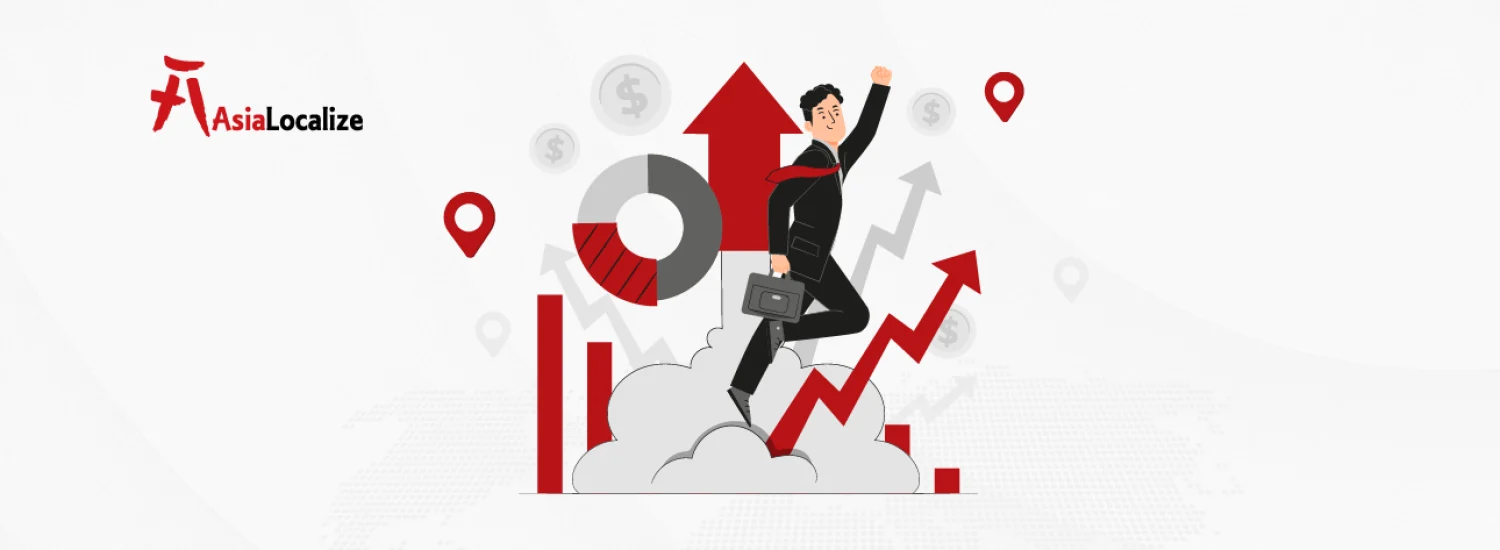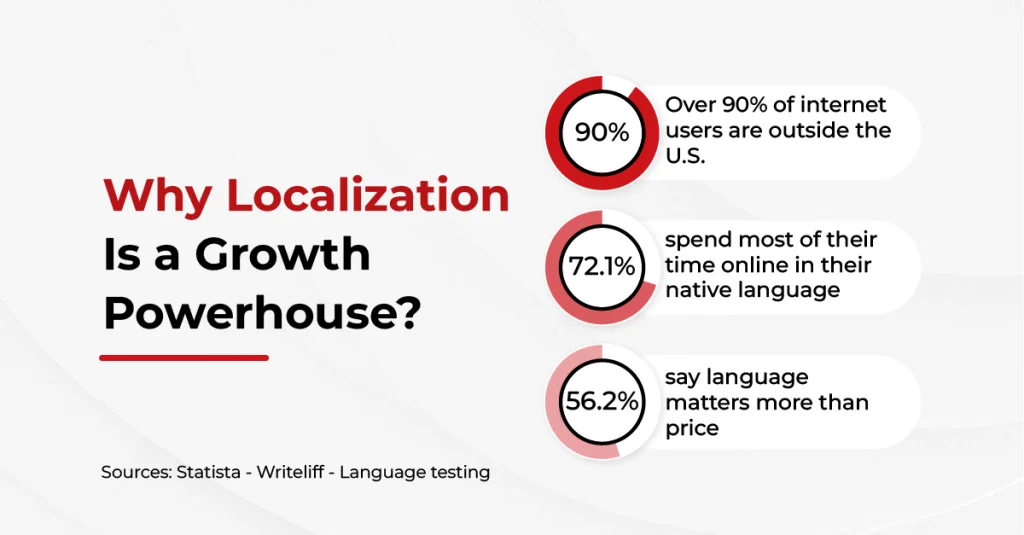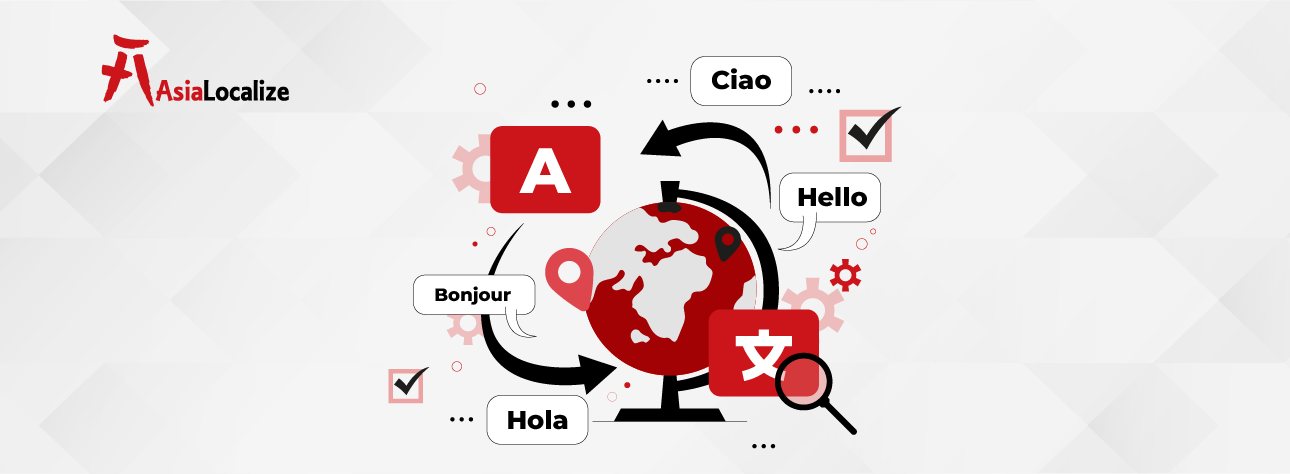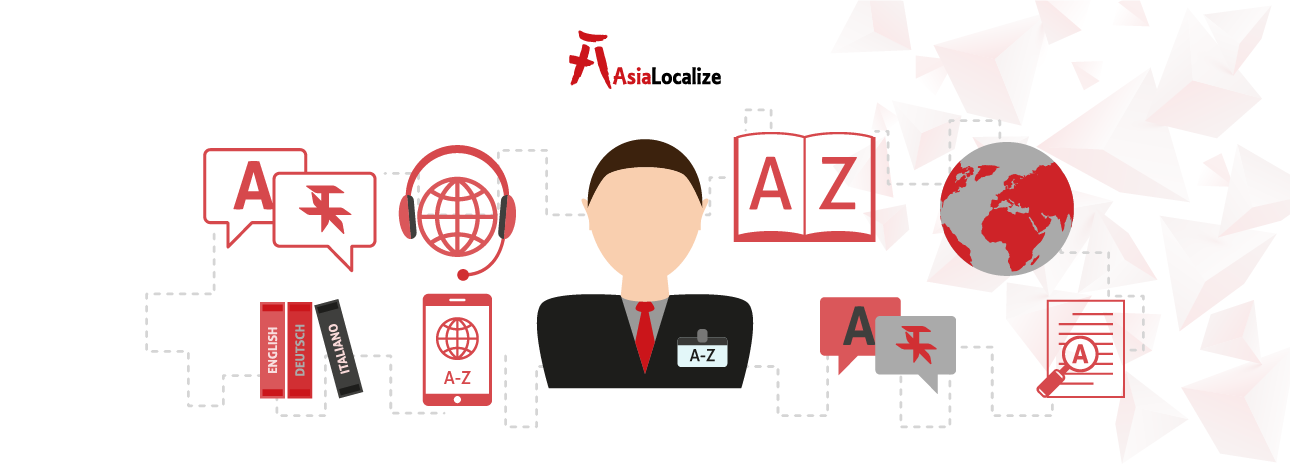As businesses race to reach global audiences, many are overlooking the one thing that matters most to international customers: feeling understood.
In fact, 76% of consumers prefer to engage with brands that speak their language and reflect their local culture. So while your product might be world-class, if your messaging doesn’t resonate, you’re leaving serious money on the table.
In this blog, we’ll break down how a business localization strategy builds trust, boosts conversions, and gives you the edge in global markets where customer loyalty starts with cultural nuance adaptation.
Your Roadmap to Building a Well-thought-out Business Localization Strategy
Going global doesn’t mean one message fits all. If you want to scale successfully, your business needs a localization strategy that’s more than just surface-level. It has to feel native to every market you enter—visually, culturally, and technically. Here’s how to build a strategy that actually hits a chord.
Start with Smart Global Market Expansion
Before anything else, know your markets—and speak directly to them. That means using geo-targeted content that aligns with local behaviors, customs, and even holidays. Planning a sale? Make it Diwali-focused in India, not just a generic “autumn deal.” These details build a connection and boost conversions.
Master Cultural Nuance Adaptation
Words carry weight, but only when they’re used the right way. Cultural missteps can do real damage. Just look at the infamous case where Pepsi’s “Come Alive with the Pepsi Generation” was misinterpreted in China as “Pepsi brings your ancestors back from the dead.”
That’s why cultural adaptation is more than a translation issue—it’s about ensuring your message lands right. From color choices to humor and idioms, make sure your content feels authentic to each audience.
Nail International SEO from the Ground Up
If your global customers can’t find you, they won’t buy from you. International SEO best practices make your localized content visible in the first place.
That means hreflang tag implementation, using regional domains or subdirectories, like .co.uk for the UK or /de/ for Germany, and doing keyword research for each region. Get this right, and you’ll show up exactly where your customers are searching.
Tools & Tactics to Scale Your Global Impact
Dominate Markets with These Localization Hacks
Reaching international audiences is one thing—scaling across them is another. If you want to move beyond basic translation and actually make an impact, the right tools and tactics are essential.
Automate with Translation Management Systems
Managing content across multiple languages can get messy fast. That’s where translation management systems (TMS) come in.
Automation platforms help streamline the entire workflow, from content extraction to translation and publishing, without losing your brand’s tone. Their localization APIs allow teams to move faster and stay aligned, even across dozens of languages.
Go Live with Website Localization Tools
Your site is your storefront, and it needs to speak the language of every visitor. Website localization tools make this simple by integrating directly with CMS platforms like Shopify, WordPress, and BigCommerce.
You get real-time updates, CMS Integration, and SEO-optimized multilingual pages—all without needing a dev team on standby.
Use Localized Marketing Campaigns
Marketing that works in one country might flop in another. That’s why the most effective global brands tailor their campaigns to local preferences.
Real-World Example: KFC in South Africa

In South Africa, KFC launched a limited-edition campaign featuring bucket designs by local artist Karabo Poppy. It wasn’t just packaging—it was a cultural statement. The campaign encouraged users to share their buckets on social media with #madeforsharing, blending region-specific branding with digital engagement.
This kind of localized marketing campaign builds local pride and creativity while boosting online visibility. KFC didn’t just sell chicken—they built a moment that felt personal and shareable. That’s what localization looks like when done right.
Avoid These Costly Localization Mistakes
Steer Clear of Errors Before They Cost You Customers
Localization opens doors—but poor execution can close them fast. Here’s how to avoid the most common (and costly) mistakes.
Accuracy Is Everything
Sure, AI translation is fast, but not flawless. Studies show it fails around 30% of the time, especially with technical or cultural content. These inconsistencies can confuse customers or damage your credibility.
For dependable results, invest in professional business translation services powered by expert linguists and supported by AI-driven tools. This human-first approach ensures high translation accuracy and cultural relevance while maintaining brand consistency across languages and markets.
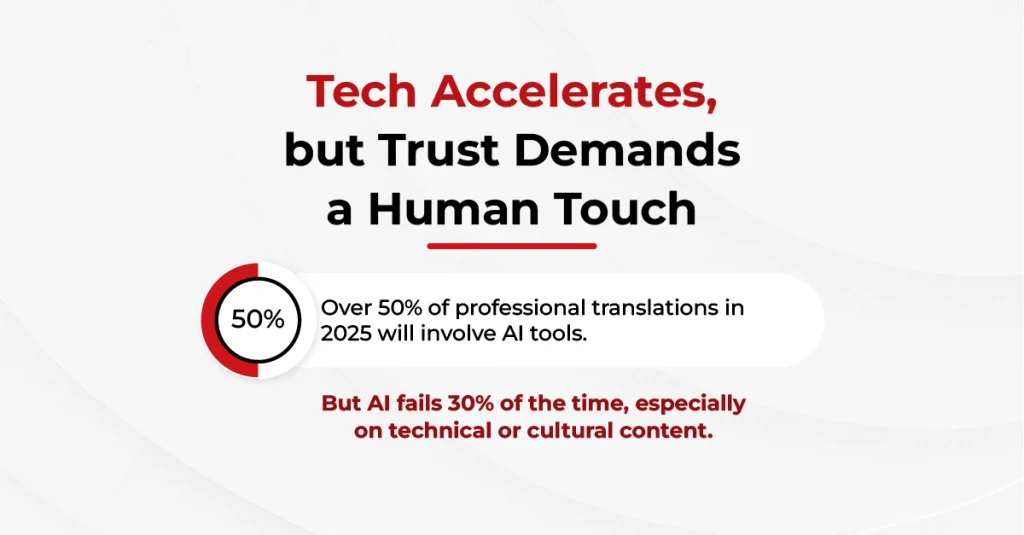
| Polish Your Content Before It Goes Global. Benefit from our expert business proofreading now! |
Plan for the Scalability of Localization
As your business grows, so will your need for high-quality multilingual content—from SEO and help center articles to product descriptions and user interfaces. Managing this across multiple regions in real time can become overwhelming without a clear strategy.
To scale localization effectively, you need flexible workflows, centralized content management, and automated processes that adapt to increasing volumes. This ensures faster rollouts, consistent messaging, and optimized multilingual metadata, helping you maintain quality and efficiency as you expand into new markets.
Legal Compliance Isn’t Optional
Legal language doesn’t always translate cleanly, and errors here are costly.
In one real-world case, a Chinese translator mistakenly translated “steel balls” as “silicon carbide”—two very different materials. The U.S. International Trade Administration refused to amend the error, resulting in incorrect antidumping duties and a costly trade dispute.
When entering global markets, make sure your legal documents are properly translated and meet local laws and regulations.
| Not Sure Where to Start? Our Business Resources Can Help! |
Expanding into global markets is exciting, but it takes more than translation. It’s about creating language-specific customer journeys that feel familiar, trusted, and relevant.
From multilingual customer support and localized UX/UI design to regional payment methods and compliance, every detail shapes how international customers see you.
If you’re serious about going global, AsiaLocalize is here to help. With expertise in 120+ languages and deep knowledge of regional markets, we build localization strategies that connect.
| Let’s build something local—everywhere. Learn More About Our Business Translation Services. |

